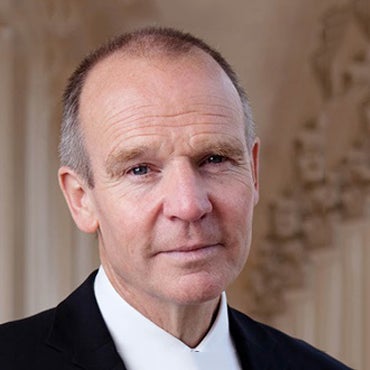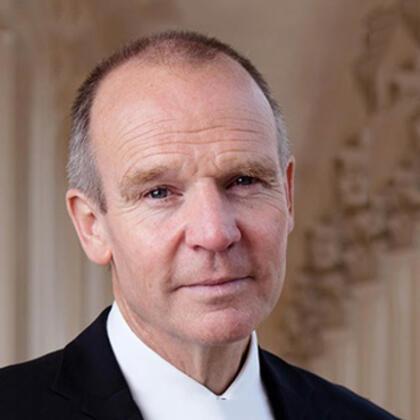Birth control, Death control and the Demographic Transition
Share
- Details
- Transcript
- Audio
- Downloads
- Extra Reading
The improving survival rates of children, and the freedom to plan family size, have dramatically changed patterns of health and disease around the world. In wealthy countries, health is better for longer than ever, and as many people now die from injuries as from infections. But there are costs to living longer, as aging and chronic illness raise questions about the quality as well as the duration of life.
Download Transcript
Birth control, death control and the demographic transition
Christopher Dye (dyec@who.int)
Gresham Professor of Physic
Notes on the slides, 15 February 2006
These notes and the lecture slides draw on many sources, some of which are quoted directly. I will provide these sources on request.
1. We are getting older. I don't just mean that each of us in this room is ageing - that's regrettably obvious. I mean that the average age of people in most countries of the world - rich and poor - nowadays is rising. That is happening for two reasons: women are having fewer children, and life expectancy is increasing.
2. Knowing that people are getting older on average, in this lecture I want address these three questions: How did it happen? What are the consequences? What should we do?
3. First, let me deal with some urban truths and myths, before we get to some hard data. Some commonly-heard assertions are not true: there are not more people are alive today than have ever died. Arthur C. Clarke, author of "2001: A Space Odyssey", and best known perhaps for his science fiction, was also good on science fact ( e.g. the imagination behind satellites). Thus, more or less correctly, one of the characters in 2001 points out that "Behind every human being now living stand thirty ghosts." The second assertion here is, however, true: two thirds of all people who have made it to 65 in the history of mankind are alive today.
4. Clearing up the demographic facts about the past and present is one thing. Looking into the future is quite another. There are plenty of unresolved questions and some highly-divergent opinions. One group we might call techno-immortalists, among whom are Ray Kurzweil and Aubrey de Grey. De Grey believes, for example, that "the first person to live to 1000 might be 60 already." Not many people would hold to this view, me included. But the debate does highlight the fact that longevity is increasing, as fast as ever. But we cannot confidently say what life expectancy will be by, say, 2050.
5. The demographic transition. Europe since 1500.
6. The whole process of aging populations is commonly called the "demographic transition". I'll first show you a stylized but made-to-look-real view of how it happens, and then I'll show you some real data. This picture captures the four principal phases:
Phase 1. Pre-industrial: high birth, high death, low, steady population, short life expectancy.
Phase 2. The fall in death rates, growth of life expectancy.
Phase 3. Fall in birth rates, decelerating population growth
Phase 4. Post industrial. Low birth and death rates: no growth, high population? Deindustrialization? Depopulation?
7. Here is what actually happened in England. Up to about 1700 birth and death rates were high and, for much of the time, of about the same magnitude. The death rate began to fall after 1700, and has been falling ever since (except for the major spikes that mark the two world wars). It fell slowly during the 18th century, then faster during the 19th century.
8. To say that the death rate was falling is the same as saying that life expectancy was increasing. I've shown you this picture before. The life expectancy began to increase during the 18th century, then much faster during the 19th century.
9. With regard to fertility, the response to falling deaths - and we assume that it was a response - was that the birth rate began to increase, moving towards a peak early in the 19th century, before coming down dramatically to join the death rate sometime during the 20th century.
10. Why did the birth rate increase after 1700? There are probably several reasons, linked to various causes of death. One is that the risk of death during pregnancy fell?
11. ... and this may have encouraged both men and women to marry earlier.
12. The result was that, in the 19th century England, there was a huge excess of births over deaths. The difference between births and deaths is measured as the reproductive value, which rose well above its threshold value of 1 (the point of stability), and so the population exploded.
13. By the second half of the 20th century, births and deaths moved again towards equality, and are now at rates very much lower than during the 16th century. These changes over 3 centuries caused dramatic changes in population structure, as we can see in the following series of dynamically changing population pyramids.
14. From 1840 to...
15.
16.
17.
18.
19.
20.
21. ... 1910 (just before WW1), the population of men (blue) and women (pink) expanded through high birth rates.
22. Many men were of course lost during WW1.
23. But the dominant effect from 1920 onwards was that the population began to age as births fell and life expectancy continued to increase. The general pattern was interrupted by the "baby boom" after WW2, and by a drop in births during the 1970s.
24.
25.
26.
27.
28.
29.
30.
31. By 2004, we have a population with a big bulge in the middle that looks quite different from the 19th century pyramid.
32. We can see that difference very clearly in the German population, where the same processes happened, but more markedly. The pyramid is clear in 1910. The population in 2005 is shaped above all by the long-term decline in fertility. But we can also see the hole created by men who died in WW2 (absent from the top left), and by periods when the birth rate was especially low, notably around the time of WW1 and WW2. And the German baby boom post WW2. On the right, the population bulge will rise to age 60 in 2025.
33. Right now in Europe, aging is in the news almost every day. The record for longevity has been broken steadily throughout the 20th century, but now that aging is in the public eye, storied of longevity attract more attention than ever.
34. There are now databases that try to count the elderly and monitor how long they live. Here is the database on "supercentenarians", i.e. people aged 100 and over. In January 2007, there were 77 women and 7 men on record (yes, women do tend to live longer).
35. There are other ways to reflect on the momentous changes of the past three centuries. When James McNeil Whistler painted his mother aged 67 in 1871, she was too infirmed to stand for the portrait, and she was evidently happy to appear in a picture entitled "Arrangement in grey and black". Here, by contrast, is Jane Fonda, aged 69, the self-styled symbol of everlasting youth (albeit with the aid of surgery). We can assume that Whistler's mum would not have written a book at age 69 entitled "My Life So Far". We can also assume, equally safely, that Jane Fonda wouldn't be seen dead in a painting entitled "Arrangement in grey and black".
36. Pyramids and totem poles. Developing countries emerging from the pre-modern era.
37. Developing countries are yet to undergo these profound changes in population structure, though they are beginning to do so. They want to get from pyramids to?
38. ... European style totem poles.
39. The countries that are now in transition from the pyramid to the totem pole show some similarities and differences to what happened in Europe. Comparing Mexico with Sweden, we see the similarity in the way fertility changes with respect to infant mortality. The differences are, for countries like Mexico:
* A later transition
* A faster decline in death rates (50 yrs versus 150 yrs). Methods of reducing mortality have been imported from richer countries, and applied rapidly. In most developing countries childhood mortality remains high, but 1/3 to 1/2 what it was 50 years ago. However the most rapid improvements have occurred in places in which female literacy has increased the most. Therefore, it is not simply the application of modern drugs that is responsible but, rather, behavioural changes that have improved survival (e.g. changes related to hygiene).
* A longer lag between the decline in death rates and the decline in birth rates. Fertility change requires a more conscious effort than mortality change and perhaps requires social and behavioral changes that conflict more with traditional values. Slow economic changes may be a contributing factor, especially because many people still live in rural areas, particularly in Africa.
40. And therefore higher maximum rates of growth: over 3.5% growth per year at the height of Phase 2 in Mexico, compared to 1.3% in the same stage in Sweden. Also, as a result, age structures are far younger now in countries like Mexico. These data yield doubling times of 20 years for Mexico versus 55 years for Sweden.
41. Putting together these stories about developed and developing countries gives a changing picture of the world, which is nicely captured by Worldmapper. World population in 1500 was dominated by Asia and Europe. At the time of Spanish conquest in South America, and when Christopher Columbus was exploring Central and South America, the combined population of Mexico and Peru was greater than the total of all other American countries. The regions with the largest populations remained Southern Asia and Eastern Asia. Together these contained more than half of the world's population. Worldwide population distribution in 1500 was roughly similar to that in year AD1, despite the numbers almost doubling over this period.
42. In Spring 2000 world population estimates reached 6 billion. Asia was still dominant, but with much greater representation from Africa and the Americas, with Europe shrinking in comparison.
43. 133m babies were born in the year 2000. In countries with the fewest births per person, more people are dying than are being born. More children are born each year in Africa than are born in the Americas, all of Europe and Japan put together. Worldwide, more than a third of a million new people will be born every day this year. Europe's diminishing role is highlighted by the distribution of births in 2000, and even more so by...
44. ... the distribution of teenage mothers in 2000.
45. The demographic division and the future of world population.
46. What we have now is a demographic division between the developed world (where population will not rise much between now and 2050), and the developing world which will drive total population growth. We can expect between 8 and 11 billion people in 2050, that is, up to double the current world population.
47. Broadly (and crudely) speaking, there are going to be populations that are either small but elderly, or youthful but large. Here the "buts" suggest that elderly and large are problematic. How problematic? And what is to be done?
48. World population must stop growing sooner or later, and I share the view that sooner is better. Here are three arguments for "family planning". They are that reducing fertility should lead to: better health and the release from poverty; rights for women (control of fertility); and better protection of the environment.
49. Let's look at the release from poverty, and the better health that goes with it. Pakistan's current, youthful population pyramid will produce a bulge in the productive workforce by 2050.
50. That bulge in the young adult workforce increases the proportion of the population that is economically productive, and has been called the "demographic dividend". In East Asia, 1/3 of the economic growth during the 1980s and 1990s has been attributed to the demographic gift. Africa is only now beginning to enjoy such a growth in the workforce.
51. Here is Asia's economic miracle: from 1990 to 2015, a dramatic reduction in the proportion of people living on up to $1 a day. By 2015, that may have begun to happen in Africa, but it will take much longer to replicate the Asian success in Africa.
52. Among Africa's many problems is a massive AIDS epidemic. Without AIDS, South Africa could expect the productive youth bulge.
53. With the AIDS epidemic that is now cutting through the population, they will lose many young men and women, the full consequences of which will be hard to measure but which will surely run over decades.
54. How can fertility be reduced? Modern contraceptives - especially the birth control pill developed in the 1950s - are of course far more effective than the mechanisms used, say, in England in 18th and 189th centuries. And the pill, and other contraceptives, have given women much more control over their own fertility, and more power to plan their families, with all sorts of positive outcomes.
55. Fertility rates remain highest in Africa, the Middle East and South Asia, between 3 and 8 children born to each women, which is far above the replacement rate of 2.1.
56. Contraceptives work, as shown in Kenya: there is a striking inverse relationship between contraceptive use and the number of children born to each Kenyan woman.
57. But even with that success, the population will continue to grow, albeit more slowly after year 2000.
58. And growing populations are currently and potentially disastrous in the poorest parts of Africa. This is what happened in the dry, locust infected summer of 2004 in Niger. In the picture, a Tuareg child holds her baby brother. As a result of the food crisis, her family had to sell half their cattle to be able to buy enough feed for the other half.
59. Niger is one of the poorest and least literate countries in the world. It is also one of 12 nations whose population is expected to triple (or more) in size by 2050. Since the 1960s, the population of Niger has already tripled, whereas its arable rain-fed land area has declined by half as a result of drought. In the 1990s, grain production was 15% lower than needed and in 2005 a famine was averted only by international food relief. The consequences of continued rapid population growth are potentially catastrophic. Prospects for future food sufficiency are especially bleak. The fertility rate in Niger remains unchanged and is one of the highest in the world. Contraceptive use is very low and is predominantly for spacing children rather than limiting family size. Only 17% of women from Niger have an unmet need for family planning and, of these, 56% do not intend to use modern contraception in the future. Child mortality remains very high with more than a quarter of children dying by age 5. Nevertheless, women aged 30-39 years, on average, have more than four surviving children but over 90% with four children want more. Improvements in child survival should be a top priority but should not be used as a reason for failing to address population growth. Rapid and deep reductions in fertility must be a central part of the solution.
60. As the population of poorer countries of the world continue to grow, the number of people living in richer countries will fall. Fertility rates in many rich countries are now below replacement rate.
61. By 2050, Germany's population will not only be falling, but the pyramid will have turned into a totemic figure wearing a flat cap.
62. Some demographers, like David Reher, view that as a disaster. In is opinion, "A fertility rate of 1.7 is a disaster if you look a couple of generations down the line." He imagines "Urban areas in... Europe... filled with empty buildings and crumbling infrastructure..."
63. Others, like Paul Ehrlich, believe that the fall in population presents soluble problems. Ehrlich's first "Population Bomb" never exploded, at least not hugely and on a wide scale. But he still reckons that the optimum human population size is about 2 billion and sees "Population shrinkage is a hugely positive trend." "There is no compelling reason to postpone the inevitable end to population growth, and every reason to welcome it." As fertility rates decline across the developed world, governments are offering big incentives for childbearing. But experts don't expect them to have much effect.
64. But how do we cope with older populations? Answer: revise retirement and social security arrangements. We put in place what have been called "career extension and geezer-retention policies". These are the average hours worked per week by age in Germany. The blue line graphs the pattern in 2005 that produced the overall level of 16.3 hours of work per week per capita. The red line shows the increase in work effort by older Germans required to maintain this overall level of effort in 2025. The yellow line illustrates one way to redistribute work more equally while maintaining the overall effort: People between 20 and 65 would work 25.1 hours per week on average.
According to Henry J. Aaron, "We can manage the problems of (US) population aging easily. To do so, American policymakers need to keep a few basic facts in mind. First, apart from borrowing or lending from foreigners, all national consumption comes from currently produced goods and services. How that consumption is divided between the economically active and inactive depends on the relative size of these two groups and their relative living standards. Second, consumption by the economically inactive can be financed either by their own past savings or by current taxes on the economically active. Third, past savings are responsible for today's capital stock, which influences today's productive capacity. Finally, past savings also can be used to support today's elderly."
65. If fertility can be reduced in the developing world, and managed in the developed world, then maybe population will stabilize during the 21st century. Let us hope it will be so; the highest UN projections to 2150 (25 bn people) don't bear contemplation.
66. In the mot likely scenario, only about half the population will be aged 15-59 years - much lower than the proportion of people that make up the workforce (over 70%) in countries that are now enjoying the demographic dividend; 30% will be 60 or over.
67. As life expectancy increases and population structure changes in Europe, it is clear that we shall have to change the way we live. It's not just that we shall have to work for longer. Consider, too, that each couple can still only have two (and a bit) children. If everyone live to age 100, the average age of people will be 50, and your children could be 70-80 years old when you die.
68. But let me end on a positive note. ''I dream, I think, I go over my life,
I never get bored'.' Jeanne Calment, who died aged 122 in 1997, still holds the record for being the longest-lived person. Here she is enjoying a glass of something strong and a cigarette (she quit in 1994, but not quite).
69. And here are two heroes in my own specialty - TB. Long-term boredom is a fear of some. Among the models here are John Crofton and Philip d'Arcy Hart. D'Arcy Hart retired in 1965, then started a second career. Sadly he died last year, but only gave up his lab work at Mill Hill at age 102. Who says you have to have just one career? Many of us in future might have two or three. Crofton (now aged 95), called me earlier this week to ask "So how are we going to handle this meeting at the European Parliament next month?" We will be sharing the speakers' platform. His call made me feel 50 years young.
70. An opinionated summary. The biggest threat we face is: an over-populated, over-heated, degraded planet, with millions living in poverty. The demographic solution: cut fertility, stabilize or reduce population, get used to long lives. But don't count on immortality.
This event was on Thu, 15 Feb 2007
Support Gresham
Gresham College has offered an outstanding education to the public free of charge for over 400 years. Today, Gresham plays an important role in fostering a love of learning and a greater understanding of ourselves and the world around us. Your donation will help to widen our reach and to broaden our audience, allowing more people to benefit from a high-quality education from some of the brightest minds.


 Login
Login







